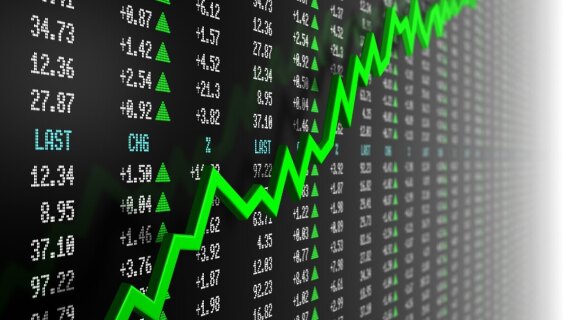The economy is in free fall and nearly 40 million are unemployed. So why is the stock market rallying? It’s complicated.
Don’t look now but we are in the midst of a huge rally, and technically a bull market. The S&P 500 has soared more than 30% from the lows of March 23 in just 60 days. The index is now down just over 11% from the all-time highs and is at the same level as it was this past October.
Meanwhile, back on Planet Earth, the economy is enduring the worst crash in our lifetimes. Business activity has contracted during the shutdown to a level that is light-years beyond what we have seen during any recession. There are 38 million new unemployed (and counting). Major banks are predicting a 40% fall in GDP for the second quarter, which ends at the end of next month.
Then Why is the Stock Market Rallying?
So why is the stock market rallying while the economy is crumbling?
In short, the market tends to anticipate. It lives six to nine months in the future. And the market sees a huge recovery complimented by trillions in Fed stimulus and rock bottom interest rates by then.
Sure, the economy is a disaster now. But it will likely be a very short-term aberration. The economy didn’t break. It has been artificially and temporarily shuttered by the government. It can be restarted again as the virus passes. It may be the deepest economic contraction of all time but it isn’t real. And once the government gets out of the way it will spring back to form. At least that’s what the market seems to be thinking.
I have been skeptical of the market rally of late. Even looking ahead six to nine months, the economy will not be as strong as it was this past October, yet that is where the market is priced. And that’s with the optimistic scenario. There is also a risk of setbacks.
The spread of the virus could significantly increase as the economy restarts, and the restart could be delayed. The market wouldn’t like that. Everything could go great and then the virus could reignite in the fall, prompting another at least partial shutdown.
I hope those things don’t happen. And I don’t mean to be negative or gloomy. It is very possible that the market never looks back. I just want to emphasize that many risks remain in this market despite the rally. And you should stick to my strategy of targeting great stocks at bargain prices in the event of another steep decline in the market.
To be clear, I don’t doubt the economic recovery. I believe we will overcome this and the economy and the market will come back strong. I’m just saying that it might be prudent to prepare for some turbulence along the way.
What to Do Now
The S&P 500 is an index of 500 stocks. It’s a good reflection of the behavior of the overall market or stocks in general. But the index is composed of 11 different sectors. Sometimes the behavior of individual stocks or sectors doesn’t reflect the performance of the overall market.
In this pandemic economy some stocks are getting creamed. Energy and financial stocks are particularly hard hit and may take longer to come back. Other stocks are minimally affected by the situation and earnings are only slightly disrupted. The utility and healthcare sectors are good examples of that. And other stocks are thriving in this economy including online retailers and companies that offer technology benefitting the stay-at-home situation.
Earnings matter—and will ultimately be reflected in stock performance. Some companies deserve to be trading at the low point of the range and others deserve a high price. This divergence will likely become more pronounced as the market normalizes. There are winners and losers in this pandemic.
The companies I perceive as COVID-19 winners are among the as Buy-rated stocks in my Cabot Dividend Investor advisory portfolio. The Buy-rated stocks are those that have businesses that are minimally affected by the economy and/or are in a unique position to thrive in the post COVID-19 market.
Right now, I have five dividend stocks rated “Buy” in my portfolio. To learn their names, click here.
*Editor’s Note: This post was excerpted from a recent edition of Cabot Dividend Investor.

Learn More

Learn More

Learn More

Learn More

